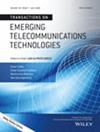A Novel Adaptive Extreme Learning Machine for Traffic Prediction and Multipath Routing Framework in Software Defined Networks With Hybrid Optimization Approach for Smart Hotel Applications
Abstract
Problem Statement
The revolutionary growth of software-defined networking (SDN) has provided a flexible framework to design and improve network management. In a wide range of networks, traffic congestion remains a major challenge. When handling massive amounts of data, it can easily lead to scalability issues due to the rapid network growth, which negatively impacts network performance. Therefore, traffic prediction becomes a quite challenging task. In addition, SDN has proven successful in various applications within wireless communication systems. For enabling better data transmission, efficient routing is essential. During the routing process, energy consumption and link breakage often increase, which limits overall network performance.
Methodology
A new traffic prediction and multipath routing model in SDN is developed based on machine learning techniques. The machine learning approach is utilized to develop an effective traffic prediction and multipath routing framework in the SDN system, considering flow rule space and Quality-of-Service constraints. Initially, the traffic present in the network is predicted using an Adaptive Extreme Learning Machine (A-ELM), whose parameters are tuned using the proposed Hybrid Position of Sheep Flock and Tunicate Swarm (HP-SFTS) algorithm. Here, routing performance is improved through the HP-SFTS, which effectively minimizes both the volume of routed traffic and the cost of communication path routing. In performance validation, the developed model accurately traces network traffic and also demonstrates resilience to noise in the training data.
Results
From the comparative analysis, the developed HP-SFTS-A-ELM model achieved scores of 37.25, 10.979, and 1387.6 in terms of root mean square error, mean absolute error, and mean squared error, respectively.
Implications of the Study
Considering the use of SDN in traffic prediction and multipath routing, this approach is primarily applicable in areas such as data center management, traffic engineering, and network slicing. SDN helps to enhance network performance by transmitting data through less congested routes, and it offers a better computational efficiency rate compared to classical techniques in different experimental analyses.


 求助内容:
求助内容: 应助结果提醒方式:
应助结果提醒方式:


